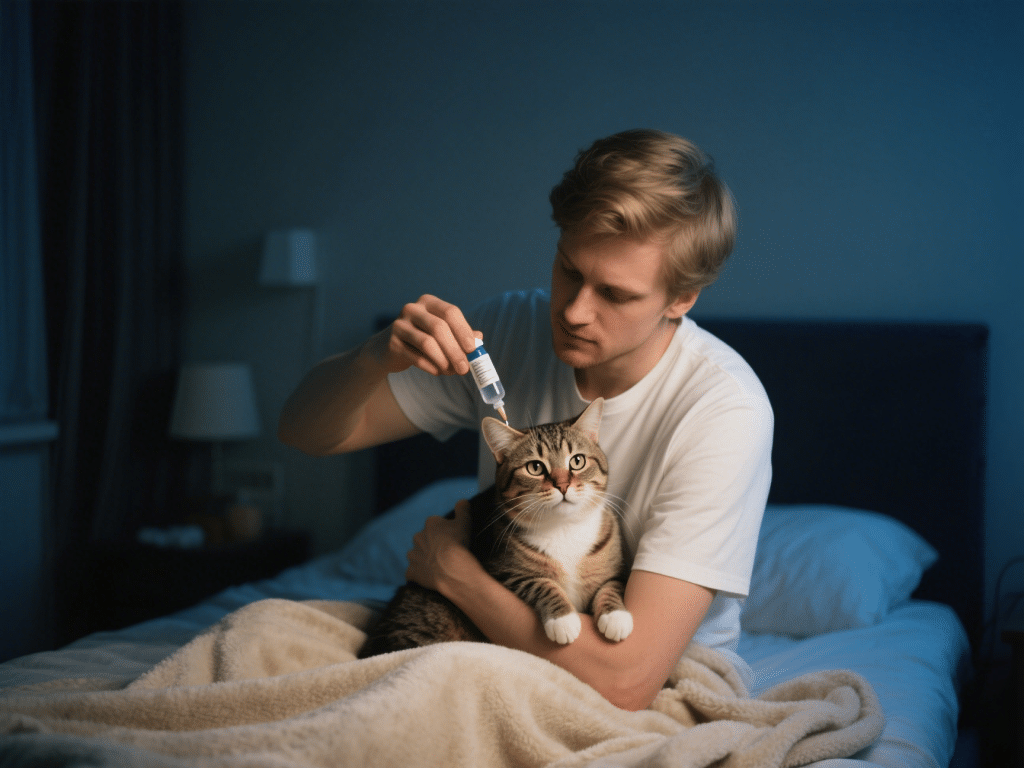Introduction
Administering oral medication to a nervous cat can be challenging. Stress can compromise the cat’s cooperation and make the process stressful for both pet and owner. This guide provides step-by-step instructions to calm a nervous cat and safely give deworming medication, ensuring effectiveness and minimal anxiety.
1. Preparation and Environment Setup
Choose a Quiet Space: Select a small, quiet room with minimal foot traffic (e.g., bathroom or bedroom).
Gather Supplies in Advance:
Dewormer (tablet or liquid)
Pill popper or syringe/dropper for liquids
Towel or cat blanket
Treats or calming pheromones (Feliway® spray)
Time of Day: Administer when the cat is naturally calmer (early morning or late evening).
2. Desensitization and Positive Association
Familiarize with Supplies: Place the pill popper, syringe, and treats near the cat’s resting area for a few days. Allow the cat to sniff and investigate.
Reward Calm Behavior: Offer a small treat or a gentle scratch when the cat approaches supplies without fear.
Use Pheromone Sprays: Apply a cat-friendly calming pheromone on the blanket 15 minutes before administering medication to reduce anxiety.
3. Wrapping Technique (“Purrito” Method)
Lay Out a Towel or Blanket: Use a medium-thick towel to wrap the cat securely but gently.
Position the Cat: Place the cat on the towel with its back facing you.
Secure the Front Paws: Wrap one side of the towel over the front legs and tuck gently under the belly.
Secure the Hindquarters: Wrap the other side of the towel to cover the hind legs, ensuring minimal mobility but allowing breathing.
Leave the Head Exposed: The cat’s head should remain outside the towel for oral administration.
4. Administering the Dewormer
Liquid Dewormer:
Draw the prescribed dose into a syringe or dropper.
Hold the cat’s head steady; gently insert the syringe at the side of the mouth, aiming toward the back of the tongue.
Depress the plunger slowly; pause between squirt intervals to allow swallowing.
Tablet Dewormer:
Tilt the cat’s head back gently until the mouth opens slightly.
Place the tablet on the back of the tongue using a pill popper or your fingers.
Close the cat’s mouth and stroke the throat lightly to encourage swallowing.
5. Post-Administration Rewards and Observation
Immediate Reward: Give a highly palatable treat or wet food to create a positive association.
Monitor for Side Effects: Watch for mild vomiting or drooling; if severe symptoms occur, contact your veterinarian.
Gradual Release: Gently unwrap the “purrito” only after the cat has chewed or swallowed the treat and calmed down.
6. Long-Term Strategies for Nervous Cats
Behavioral Desensitization: Practice mock administrations without medication.
Consistent Routine: Administer medication at the same time and place each month.
Positive Reinforcement: Reward calm behavior consistently, even when no medication is given.
Conclusion
Administering deworming medication to a nervous cat requires preparation, patience, and positive reinforcement. By creating a calm environment, using the “purrito” method, and rewarding post-treatment, you can minimize stress and ensure effective parasite prevention.










Comments on "Step-by-Step: Administering Dewormer to a Nervous Cat" :